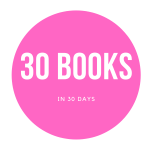Davis’s exciting debut collection of nonfiction, ranging from craft lectures to essays about writers and artists to notes on the translation process, is a great gift to readers, particularly those familiar with Davis’s short fiction, which often consists of single-paragraph half-page stories that are occasionally labeled as poetry. Here, she describes her gradual journey as a young writer away from the traditional narrative story model. Despite reading Beckett, Kafka, Borges, and Issac Babel in college, writers who were “more unusual formally and imaginatively,” she initially thought there was no alternative to the New Yorker formula. In close readings of stories by Grace Paley, Donald Barthelme, and others, as well as demonstrations of her iterative process of revising a story or journal entry to find the right words, she generously reveals how her mind works. Another fan of this collection just wrote to me that it was “rearranging the cells” of her brain; I would completely agree.
This is not entirely a book on writing, but writers and editors, those who work with words day in and day out, may find the craft lectures the most memorable and impactful. Some insights: know the power of naming a character, and name them early, before a reader knows who they are; observe yourself in the third person and keep honest notes—you might find a story there; disrupt your comfort level by taking public transportation, which will afford you the opportunity to make unpredictable conversation and to eavesdrop on the dialogue of strangers; and, perhaps most importantly, turn off your devices and find some peace and quiet for your writing time. While far from the first to emphasize the value of solitude, she succeeds brilliantly at showing where the mind can go when there are no distractions.
What emerges is a convincing argument for the value of observation: of oneself, others, and the particularities of language.
— David Varno


 Essays One by Lydia Davis (Farrar, Straus and Giroux)
Essays One by Lydia Davis (Farrar, Straus and Giroux) 